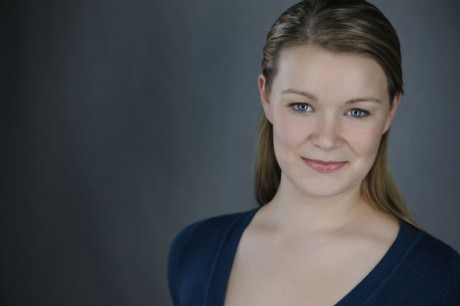In Part 5 of our series of interviews with the director and cast of Kensington Arts Theatre’s Spring Awakening, meet Director Emily Zickler.

Joel: Why did you want to direct Kensington Arts Theatre’s Spring Awakening?
Emily: This show is so powerful. I remember watching the preview for the original Broadway production online and being intensely drawn to it. There are some shows that speak with the voice of a generation, and in my opinion, Spring Awakening is that for Generation Y. The piece so clearly captures the sound and feeling of adolescence, particularly in a world filled with societal restrictions. Recently there have been so many tragedies in the news – shootings in particular – that are later traced back to an individual’s mental health being ignored or disregarded. This show brings those issues to the forefront of our minds by bringing them to life through the characters. I was eager to direct Spring Awakening because I have so many intense feelings about what the show as a whole means; and really, having a point of view is the director’s first and most important job.
What is your vision for this production?
My vision for this production was to stay as true as possible to the original play as possible. I want the audience to feel the truth of every moment in the exaggerated reality that they play presents, and to feel the stark difference between the rules of society and the rules of human emotion.
Amongst so many other productions of Spring Awakening, what makes this one stand out?
A majority of my training was based in straight plays and classical works; so, when Craig Pettinati (KAT’s Artistic Director) and I were first discussing my vision for directing the musical, I told him that I was most interested in incorporating the intentions of the original Wedekind play. Franz Wedekind’s Spring’s Awakening: The Tragedy of Childhood, written in the late 19th century, is a parable. It was a revolutionary play in that Wedekind asked previously unexamined questions of morality in German society; a society that at the turn of the century, was undergoing changes industrially, politically, and religiously. The script was so risqué that it was actually banned in Germany for a period of time. This is such fertile ground on which to start building the foundation of a production, so I jumped at the opportunity to use my knowledge to enhance what is already an amazing modern musical. What my understanding of the original text has helped me discover is how each character is unique; we’ve got an ensemble of diverse characters all of whom are fighting their own individual battles, but who blend together into a beautiful mosaic of an emotional journey. It is in my aesthetic to find the sincerity and truth within heightened realities, and I think that has made our production of Spring Awakening uniquely human.
How has your cast and Creative Team aided you in executing your vision?
My whole team has been just great throughout this process! Firstly, the talent in the cast is incredible. It took me a long time to cast this show because I didn’t want to settle for “good enough;” this is an immensely demanding script and score. I wanted to know that my cast could tackle it, and they have. Their dedication to my vision has been everything I could have ever asked for.
Kevin Garret (Producer) has been instrumental in helping us find the best creative team we could assemble. Once we discussed my vision he knew just who to call. Having Jacob Kresslof, our Dramaturg, on board has helped contextualize our production by providing a clear understanding of the original text’s intentions.
Our scenic designer, Anna Britton, has incorporated the work of the artist Egon Schiele into her vision, which directly ties in with the dark elements of this show; Ben Levine, our phenomenal lighting designer, has helped to use the lights to marry the actors and the set and he highlights the scenes with all the emotion they deserve; and the costumes provided by Eleanor Dicks are the ribbon that ties the whole cast together, visually and dramatically.
It has been a team effort all around. I’m thankful every day for the talent I’m surrounded by.
Which songs in Duncan Sheik and Steven Sater’s score move you the most?
Like in any of the best musicals, the songs and instrumentals represent the sounds of the feelings of the characters – and this show paints a soundscape that covers a lot of emotional ground. This score is unique, vibrant, diverse, and tragically beautiful. I love the variety in the instrumentation. There are elements of classical composition, some folksy guitar and string motifs, all infused with a shot of electric pop/rock! It’s hard for me to pick just one song because they are all so moving; the two penultimate numbers have always held a place in my heart. “Whispering” is a haunting, pivotal moment in the show where Wendla recognizes that she has been changed forever. This leads in to “Those You’ve Known,” which is ties in all the imagery of the show through three different characters and melody lines… it gets me every time.
What challenges have you and Musical Director Valerie Higgs had with the score?
Val, our musical director, is just great. Period. She’s far more experienced than I am and has really helped me keep my head under pressure. This score is really tricky, and she’s been able to support the cast though navigating the difficult harmonies while keeping the characters in mind. Her amazing attitude, smile and sense of humor put everyone at ease – anyone who’s ever worked with her will tell you that – so the hard work has felt like play the whole time we’ve been together.
Which character is most like you?
I relate to all the teenagers in the show for different reasons. Each of them represents a different facet of adolescence; the curiosity, angst, shyness, hormones… they’re all there. I do relate a lot with Melchior, though. I was always that kid who asked, “Why?” My parents taught me to ask questions, search for answers, and to pursue knowledge and understanding of the world around me.
Which scenes were the most challenging for you to direct?
The romantic scenes were definitely my biggest challenge. There are a lot of critical things to consider when approaching romance on stage; between the actor’s comfort and emotional safety, the believability of the physical action, the aesthetics of the blocking, and the timing of the dialogue with the music and physicality… it was like juggling extremely delicate eggs. It’s pretty awkward to be the one who has to say, “Okay, so go ahead and take your shirt off… and unbutton your pants.” I had to be sure that we had safety in the room, so that our understanding of the build of the scene could be delivered through a carefully choreographed scene without anyone feeling uncomfortable or unsafe. In the end, because we were methodical with how we approached those two scenes in particular, I think the actors are able to not worry about anything except for fully living the scenes as their characters.
What are some of the challenges and positives of directing and performing in the KAT space?
I’ve worked as an actor in this space twice before and have seen multiple productions at KAT, so I’m pretty familiar with it and it’s limitations. The new addition of the risers is a huge gift as a director. It eliminates a lot of the sight line problems that once existed and creates a more consistent stage picture for the entire audience. I wanted to challenge myself and the design team to transform the KAT stage and create an experience different from what people are used to seeing at the Armory. There are some undesirable elements in the space – the exposed ventilation system and need for hung curtains to delineate backstage from front of house in particular – we decided to incorporate these elements in to the design instead of ignoring them or trying to cover them up. On the flip side of the same coin, because I have worked at KAT for the past year, it feels very much like a home for me. When I walk in the doors and see the set of my show I feel proud of all our hard work, and happy that I am representing KAT to the absolute best of my abilities. I hope that audiences come out and take the opportunity to be taken for an emotional journey – I invite them to join us with open arms and a open heart!
Why should audiences come see KAT’s Spring Awakening? What do you want audiences to take with them after seeing Spring Awakening?
I’m very aware of how frequently this show has been produced since the rights have been released, and have seen several productions in the area. The show that we have staged here at KAT is very different from any other production of Spring Awakening that I have seen myself. I think we have taken a risk with a very conceptual production, but I think that risk pays off in so many ways. Audiences should expect to be taken on a journey through an abstract world; a world where dreams and nightmares come alive through song, and where those visions are able to affect our perception of reality.
Spring Awakening plays from February 21-March 15, 2015 at Kensington Arts Theatre performing at Kensington Town Hall/Town Center (formerly the Armory)-3710 Mitchell Street, in Kensington, MD. For tickets, purchase them at the door, or online.
LINKS
New Whisperings: Meet KAT’s Director and Cast of ‘Spring Awakening’: Part 1: Joanna Frezzo (Ilse).
New Whisperings: Meet KAT’s Director and Cast of ‘Spring Awakening’: Part 2: Catherine Callahan (Martha).
New Whisperings: Meet KAT’s Director and Cast of ‘Spring Awakening’: Part 3: Ryan Alan Jones (Melchior).
New Whisperings: Meet KAT’s Director and Cast of ‘Spring Awakening’: Part 4: Scott Harrison (Moritz).





